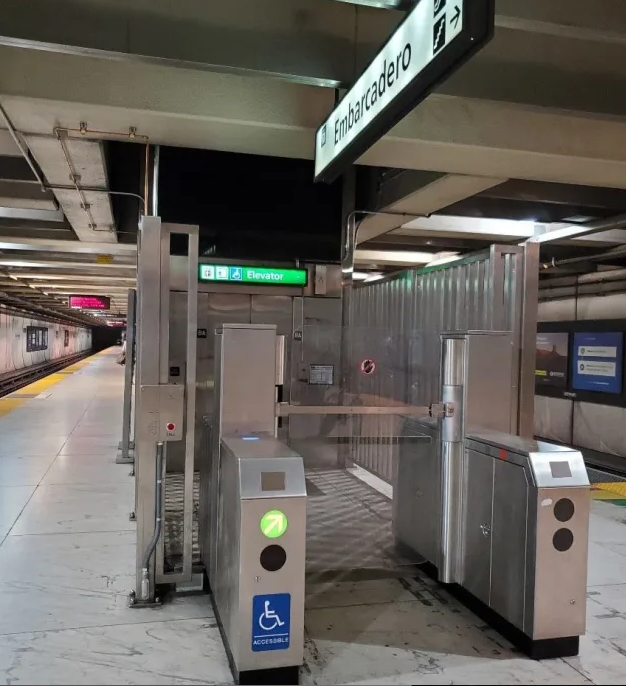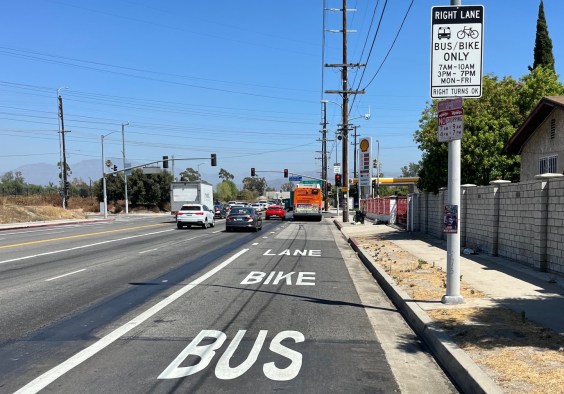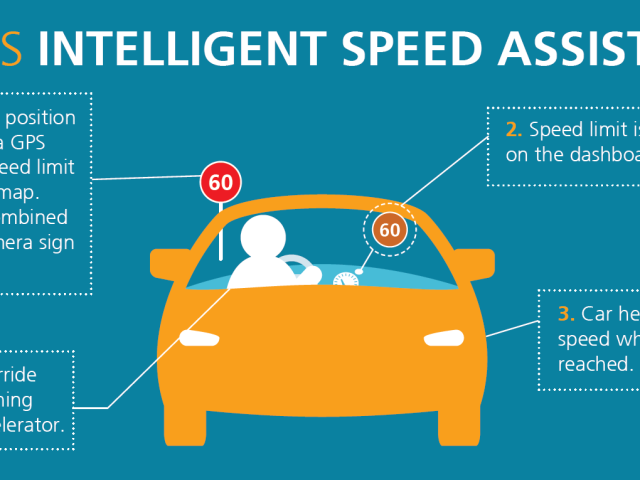Note: GJEL Accident Attorneys regularly sponsors coverage on Streetsblog San Francisco and Streetsblog California. Unless noted in the story, GJEL Accident Attorneys is not consulted for the content or editorial direction of the sponsored content.
For the first time since the subway opened in 1980, it is now possible to legally transfer directly between BART and Muni in two of San Francisco's four downtown stations. "By installing a fare gate at the platform, elevator users can tag out of BART on the platform and go to Muni’s platform. They don’t have to go all the way up to the concourse to tag out of BART anymore," wrote BART's Alicia Trost in an email to Streetsblog.
Riders tag on to Muni using the readers on the trains.
The new platform-level BART fare gates were installed at the elevator at Embarcadero in December of 2021. It turns out one was also installed, quietly, in Montgomery station in 2019 (Streetsblog apologizes to readers for missing this; blame the COVID lockdown).
As Streetsblog readers are no doubt aware, previously in order to transfer between BART and Muni, it was necessary to go up two flights--right past the Muni level--tag out of BART, tag into Muni, and then go back down to the Muni level. Often, this leads to missed connections and long waits. This is still the case at Powell and Civic Center, the other two downtown stations where a transfer between BART and Muni still requires the up-down-tag-out-tag-in trip.
Ian Griffiths of Seamless Bay Area (a group dedicated to making transfers easier) was pleased to learn about the new gates. "Hopefully they'll prioritize making this treatment available for stairs as well. And then make the signage obvious," he told Streetsblog.
Unfortunately, according to Trost, there are no plans to remove the bars that make it so hard to transfer by stairs between the two systems (as seen above). "The platform fare gate is a step in the right direction. Making other infrastructure changes and purchasing additional fare gates to address the stairs is another conversation worth having but not something that is currently funded."
But BART is planning to improve signage at the elevators and will install fare gates at the elevators at Civic Center and Powell later this year.
Of course, the Seamless Bay Area's holy grail is to establish a network operator and eliminate transfers altogether throughout the Bay Area, so fare gates between the systems wouldn't be necessary in the first place.
However, it doesn't seem the easier transfers are what motivated BART to install the additional gates in downtown--instead, it was part of a larger, long-planned fare-evasion crackdown. "The newly designed wide fare gate features a tall swing style barrier that bolts shut when closed preventing people from pushing through it or going over or under the barrier," wrote the agency in a release issued Wednesday. And the elevators were an easy way for scofflaws to bypass the BART fare gates altogether. BART has 12 more elevator gates either installed or soon-to-be installed at suburban stations that, obviously, don't have a Muni subway train and where transfers aren't an issue.
A fare gate at the Embarcadero platform has been #1 on my wish list since I first lived here in 2006, and it’s here! Transfer time between Muni and BART for elevator users has been cut from 5 min to 1 min. That’s the equivalent of living 1-2 stops closer to work. Bravo 👏🏾 @SFBART pic.twitter.com/RrBxZ5rEih
— Chris Pangilinan (@cap_transport) February 8, 2022
Whatever motivated the new gates, Streetsblog is glad to see that, finally, there is a more reasonable way to transfer between BART and Muni. As Chris Pangilinan points out in the above Tweet, for commuters who use both systems, this really is the equivalent of being moved a few stops closer to wherever one is headed.






